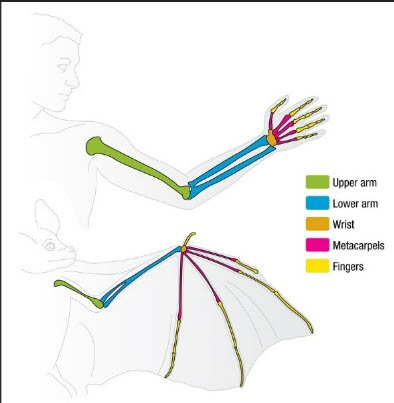Best Practices for Creating Bat-Friendly Parks
Austin is known worldwide as Bat City. Congress Avenue Bridge is widely regarded as a shining example of peaceful coexistence with wildlife in an urban center. Congress Avenue Bridge and Barton Springs Pool are considered the soul of Austin, bringing nature down into the heart of the city.
Austin Parks & Recreation, through their partnerships with non-profits like the Trail Conservancy and coordination with Watershed Protection & Green Infrastructure Management, has an opportunity to set the bar for municipal park systems around the world by showing consideration for bats as an integral part of a vibrant urban ecosystem.
This can be done by ensuring bats what all of us require:
1) Shelter 2) Water 3) Food 4) Safety 5) Enrichment.


1) SHELTER – Different bat species have different needs. Our local bat species generally break down into two broad categories: Crevice-dwelling and Foliage-roosting.
CREVICE-DWELLING BATS (roosts in parentheses)
This group of bats evolved to live in caves, fissures in rock faces, and tree cavities. Faced with habitat loss from development, they have adapted well to urban infrastructure that provides similar conditions.
Mexican free-tailed bats (bridges & voids in buildings)
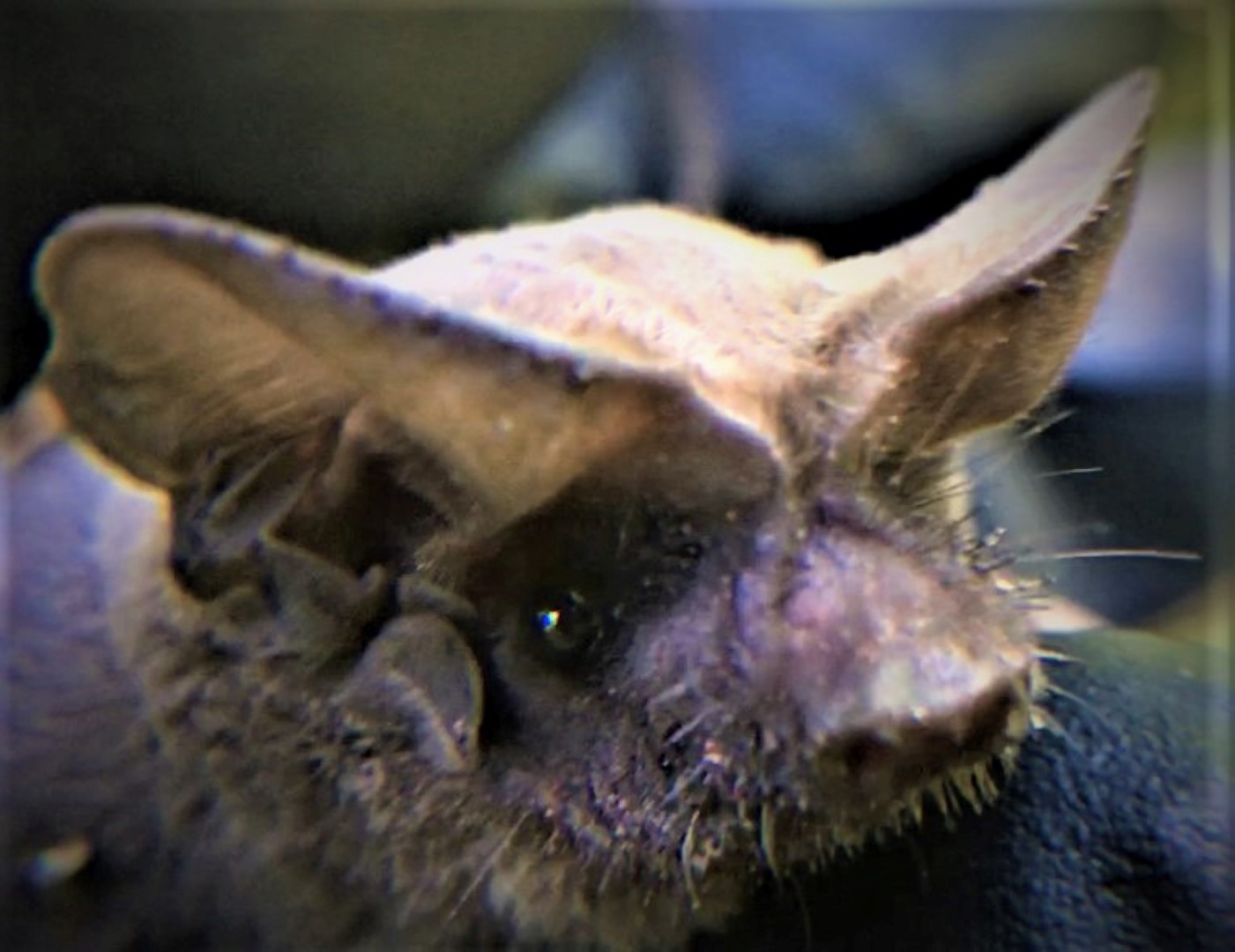
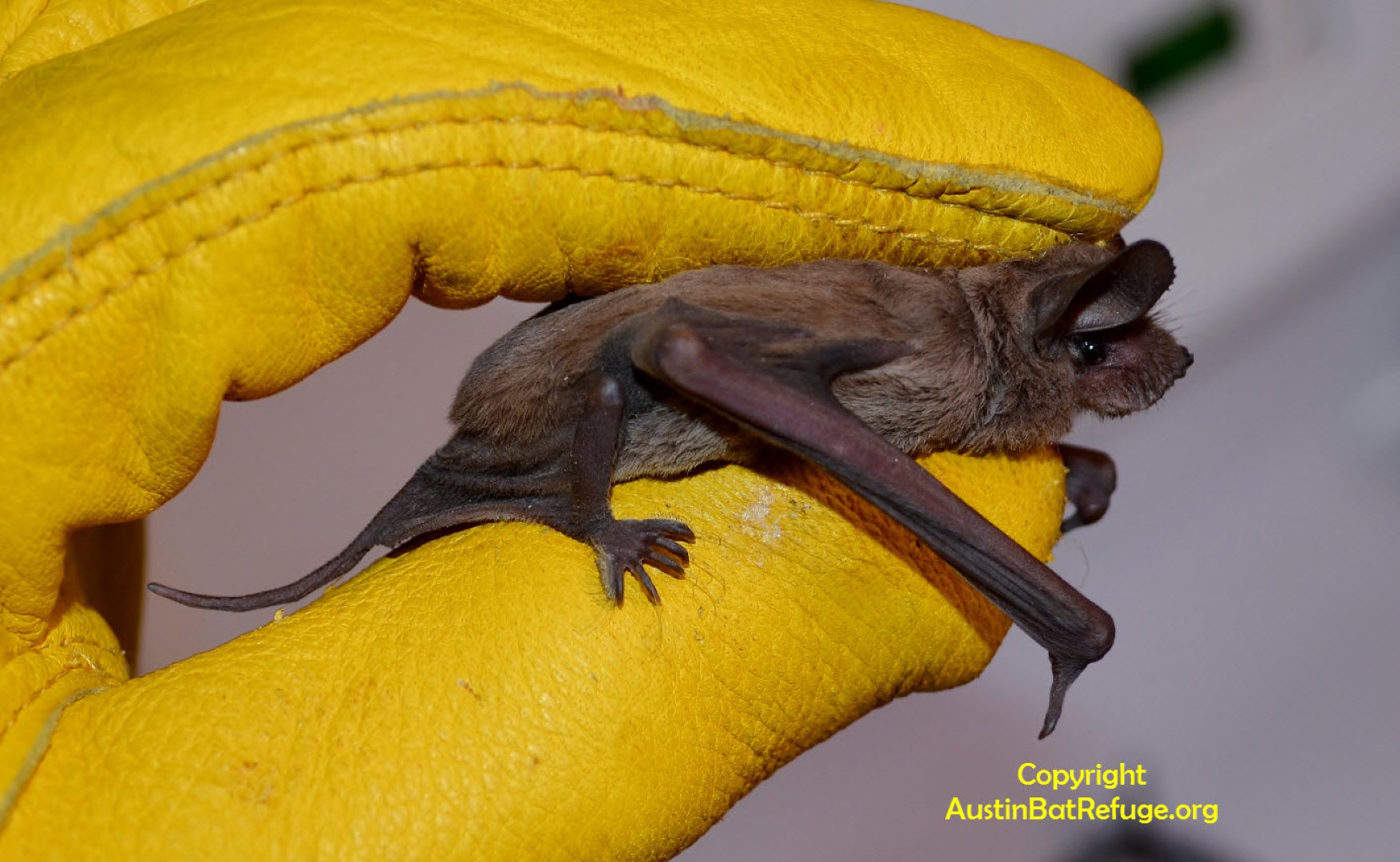
We all know Congress Avenue Bridge, but that’s far from the only location this species is found in Austin. Any bridge with box-beam construction can provide roost space for them in the expansion joints.
Many bridges in local parks have bat colonies and provide family-friendly, low-key, free-parking alternatives to Congress. Waterloo Park, 9th & Shoal Creek, Dittmar, and Loyola are all local options.
They also opportunistically roost in unused portions of buildings. Any place they can enter and utilize the voids between the exterior and interior living envelope of a structure could become a bat roost. Keep structures maintained so as not to invite them into locations where they won’t be welcome.
In winter, Mexican free-tailed bats also provide free energy audits by following heat plumes leaking from buildings and will happily shelter inside during cold snaps. If this happens in a Parks & Rec building, please thank them for their service!
Evening bats (tree cavities, apartment attics and other voids in buildings)

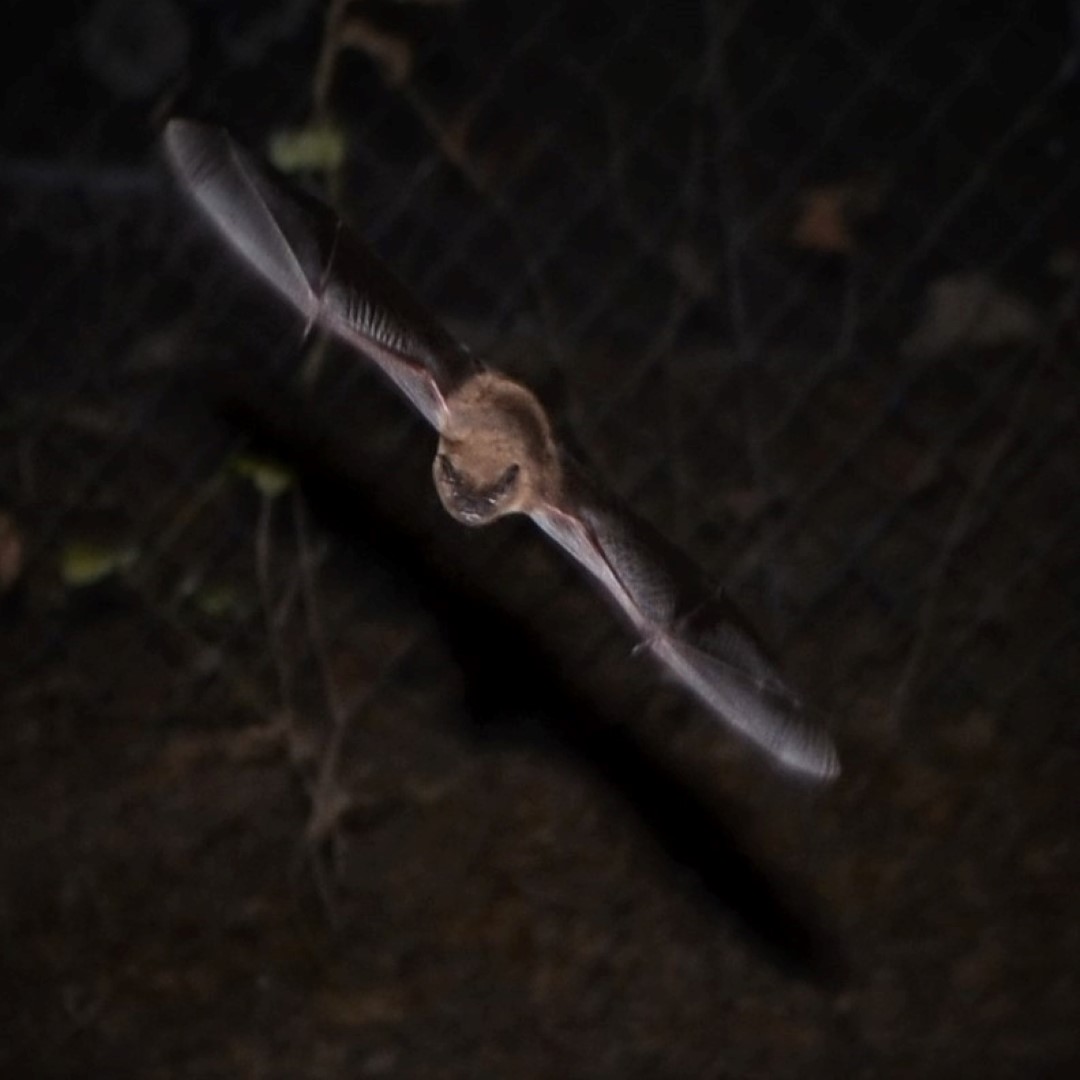
Leave tree trunks and limbs with hollows and/or exfoliating bark. Bat houses are inspired by the loose bark on declining trees, which has sheltered bats from avian predators for millions of years.
If potential habitat in a declining tree needs to be removed, because it threatens life or property, then it’s critical to first check for bat occupants.
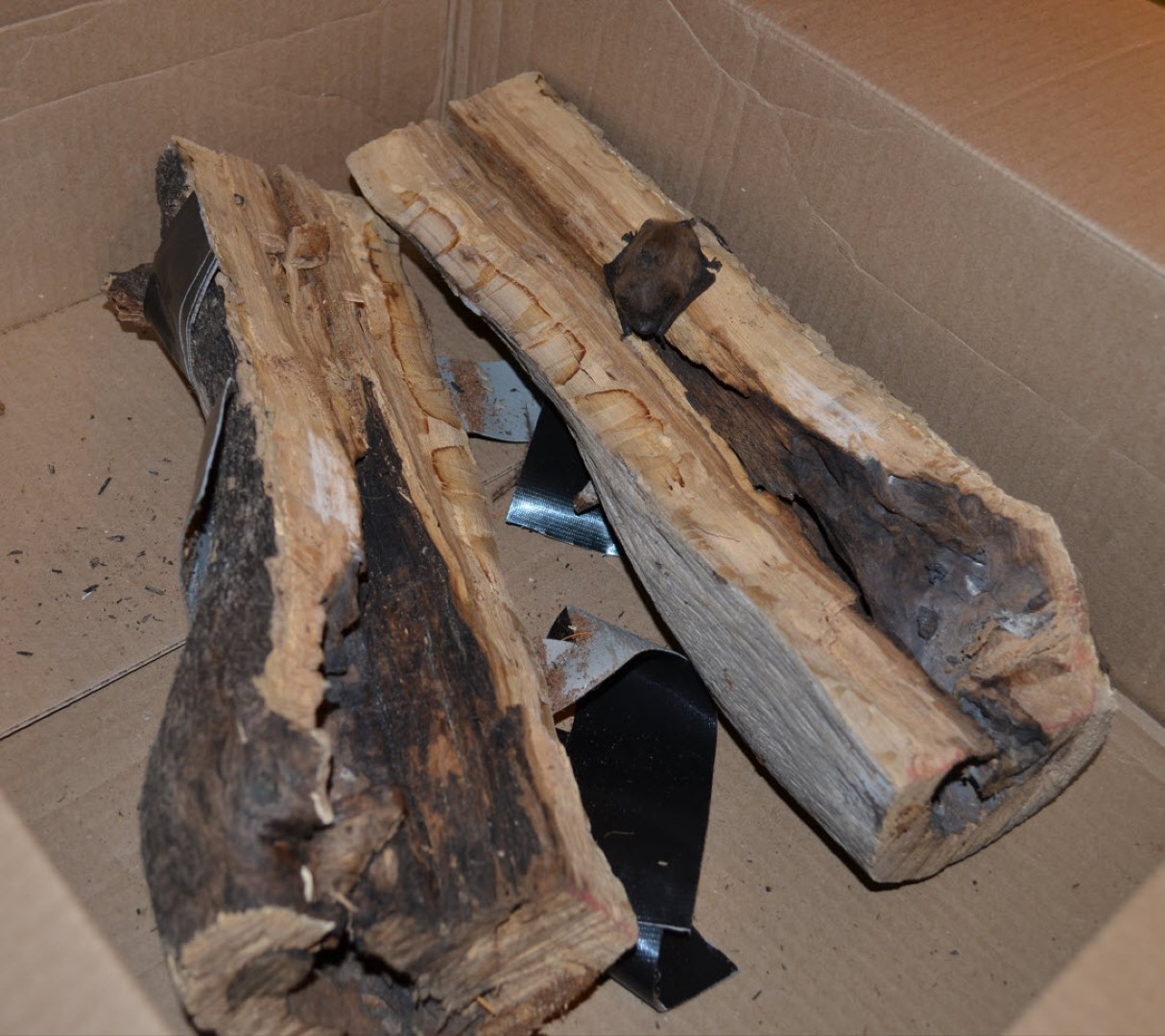
An inspection camera can be used to see if cavities have colonies (anywhere from 20- to 200 in a cavity) but can give false negatives if not fully deployed or if there is seasonal use. Trail cams could pick up bat activity as they emerge and later return to the roost. Passive bat detectors deployed seasonally can determine presence/absence of bats long in advance of any tree work.
If bats need to be excluded from dead or declining trees, first mitigate the roost loss with a Brandenbark type installation prior to taking down the tree.
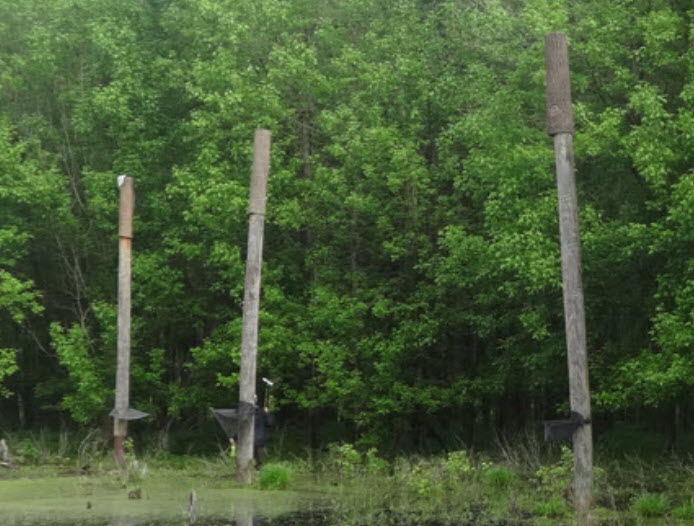
These installations mimic loose bark on trees and only require sinking a retired utility pole on which to mount the product. It can be procured as product only, product plus a consulting biologist, or turnkey installations. Installation of mitigation roosts prior to exclusion gives bats time to recognize it as a viable alternative roost and not associate it with the exclusion.
Tri-colored bats (caves but also foliage in summer)
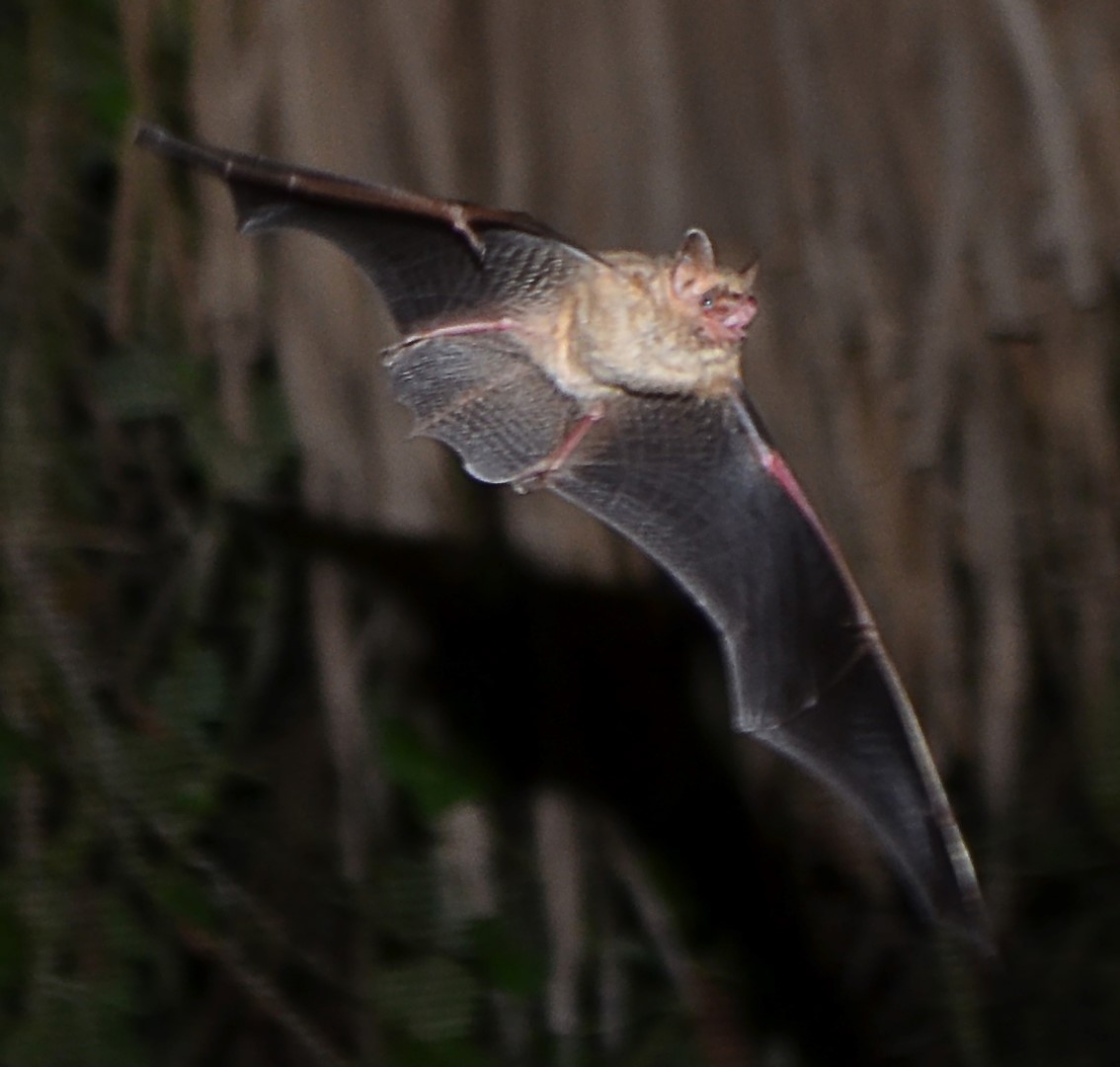
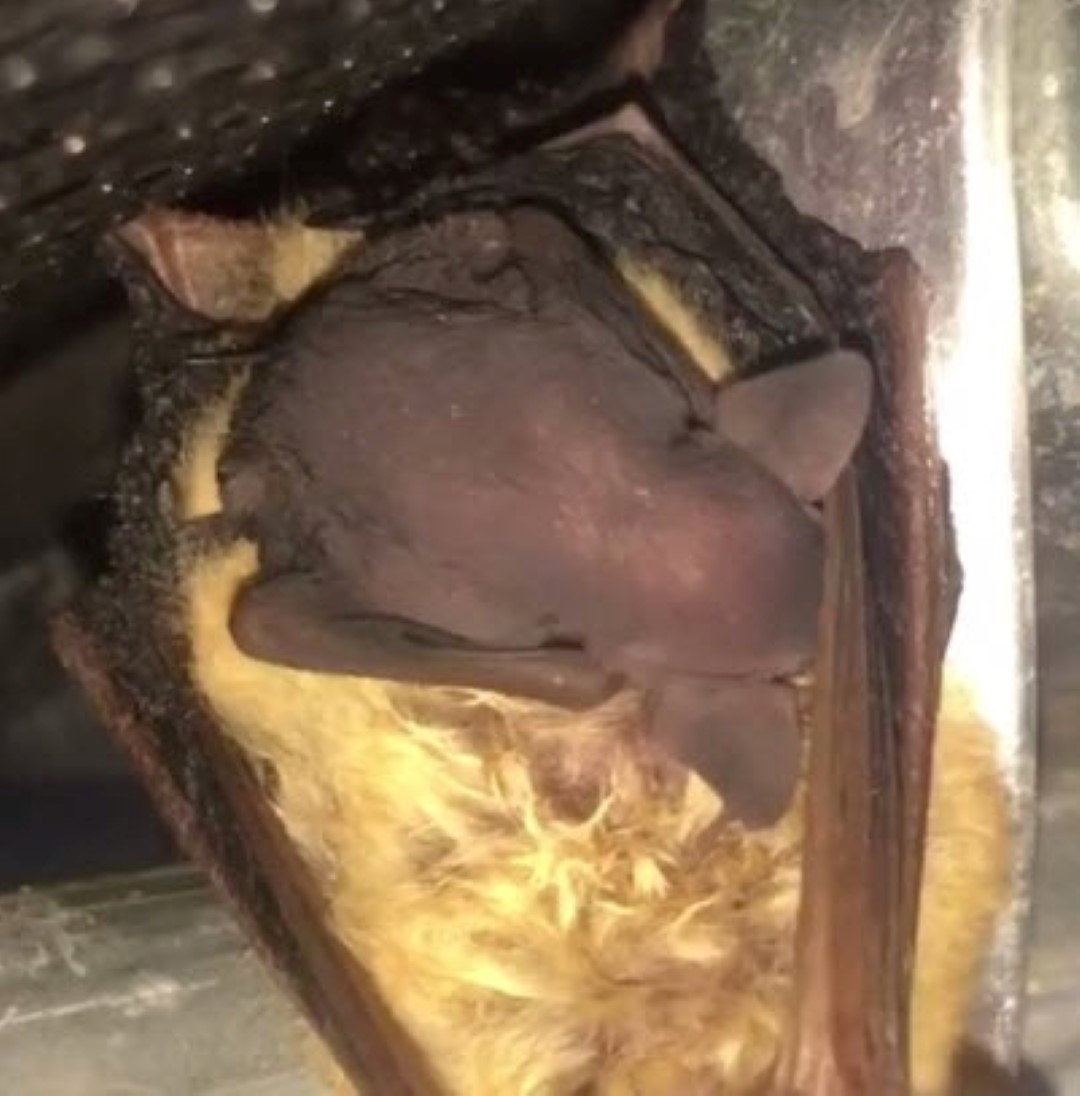
They commonly are found in odd locations during inclement weather or during local migration from summer ranges to winter hibernacula. If they are roosting high under an overhang out of reach of cats or children, then they can be left alone. If hanging low or exposed, please call us for an assessment and a possible wellness check.
Cave myotis (caves)

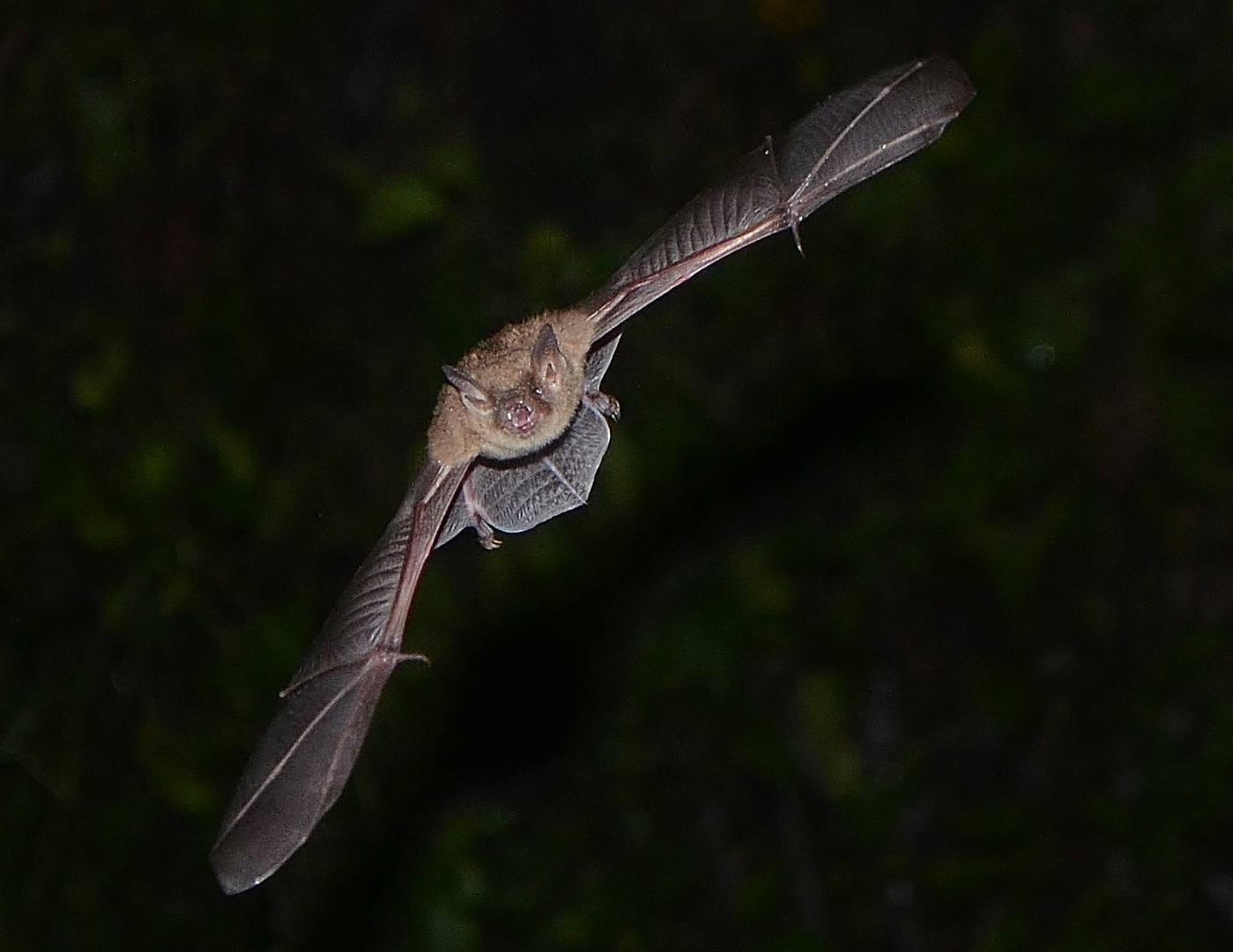
When white-nose disease first arrived in Austin, many fled their caves before the end of winter with severe wing damage from the fungus. We haven’t seen that in recent years, possibly due to a decline in the population.
Their habitat is best left in the care of local cave management organizations, who properly gate caves to keep humans out while allowing bats to come and go.
FOLIAGE-ROOSTING BATS: (preferred roosts in parentheses)
This group of bats evolved to live in unmanaged forests. We can become more bat-friendly by relaxing our rigorous maintenance of the wooded sections of parkland.
Eastern red bats (broad-leaf trees preferred)
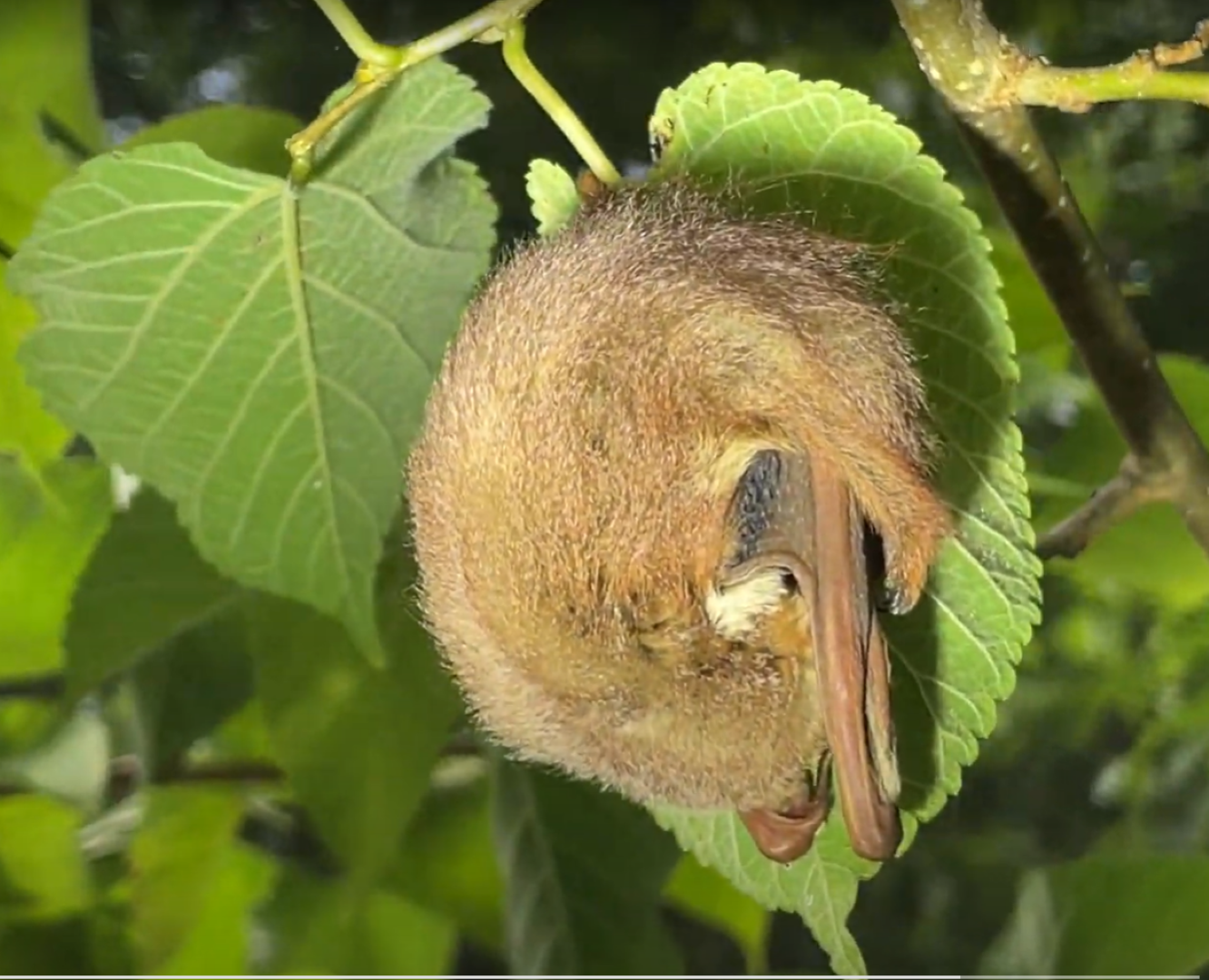
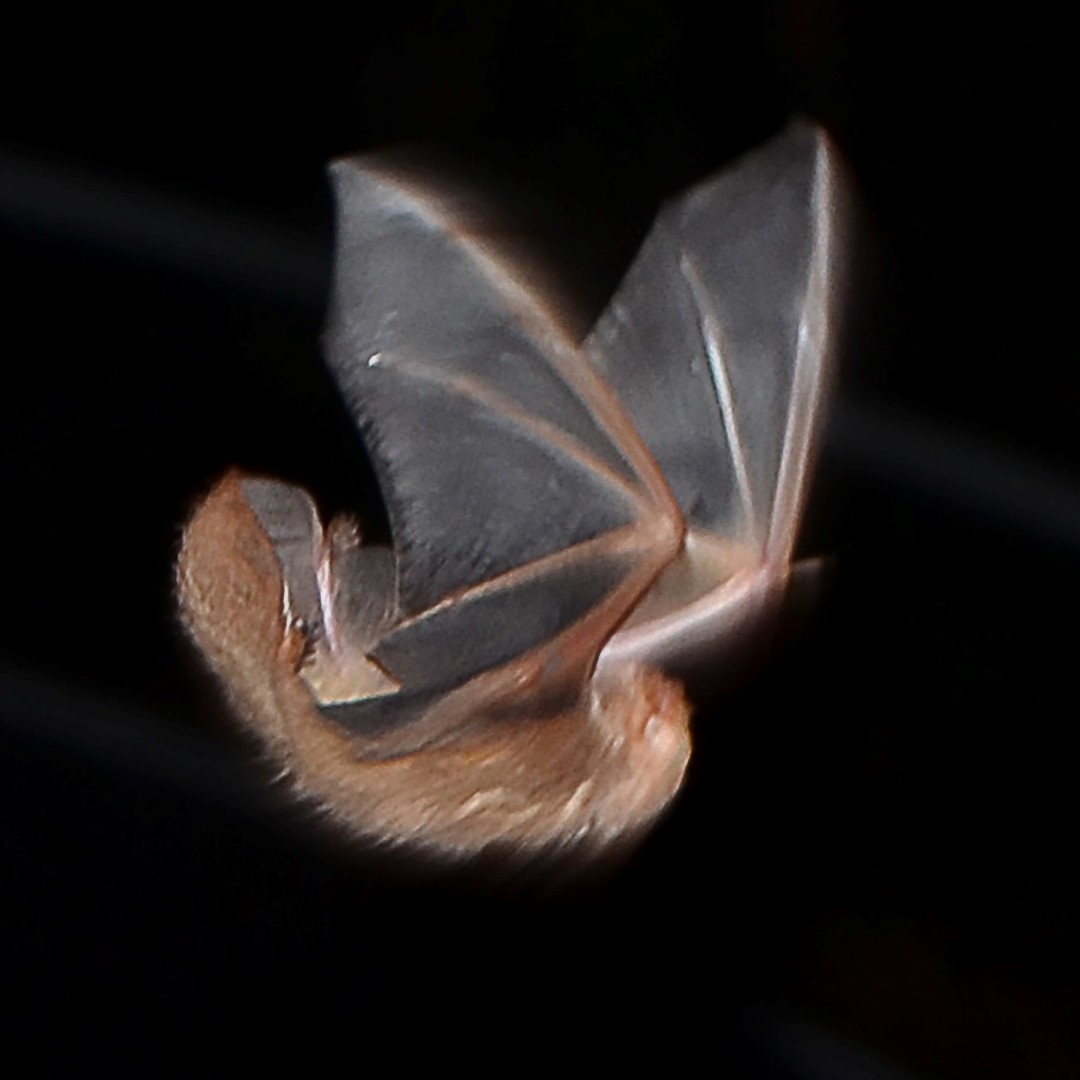
They hang from the stems of broad leaves (to hide from avian predators) and fly up into clusters of dead leaves. “Leave The Leaves” is the best way to mulch and nourish trees. We expand upon that saying to mean leave clusters of dead leaves in trees. It seems likely that eastern red bats camouflage themselves in clusters of dead pecan leaves. It’s a good way for a red bat to be inconspicuous in a green tree.


Seminole bats (pine trees)
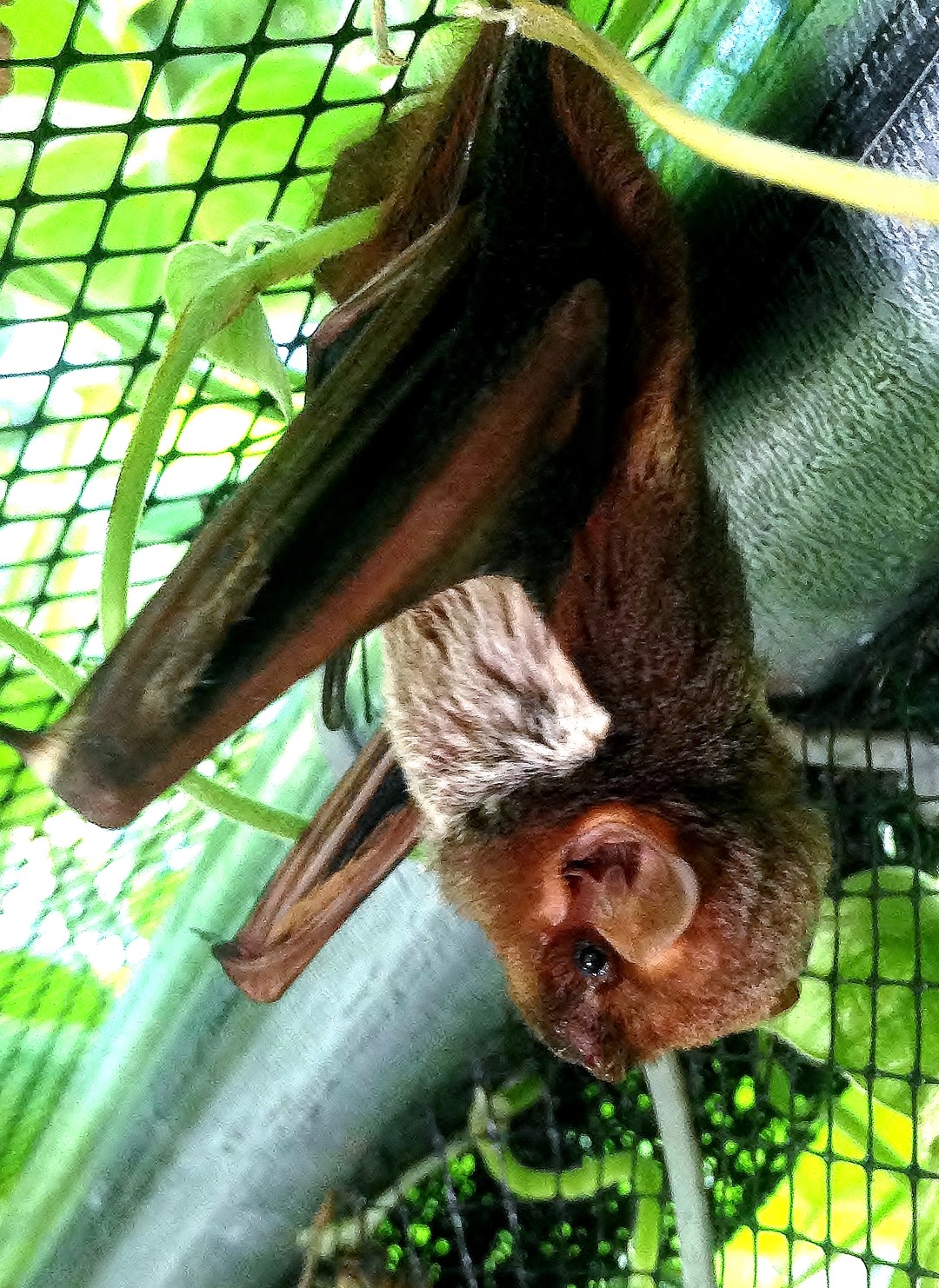

Often roost in loblolly pine trees, where they mimic pinecones. The majority of our intakes come from Bastrop, Red Rock, and other parts of the Lost Pines, the westernmost edge of the southern pine forest.
They are also said to roost in Spanish moss.
Northern yellow bats (palm trees) see our Palm Tree page
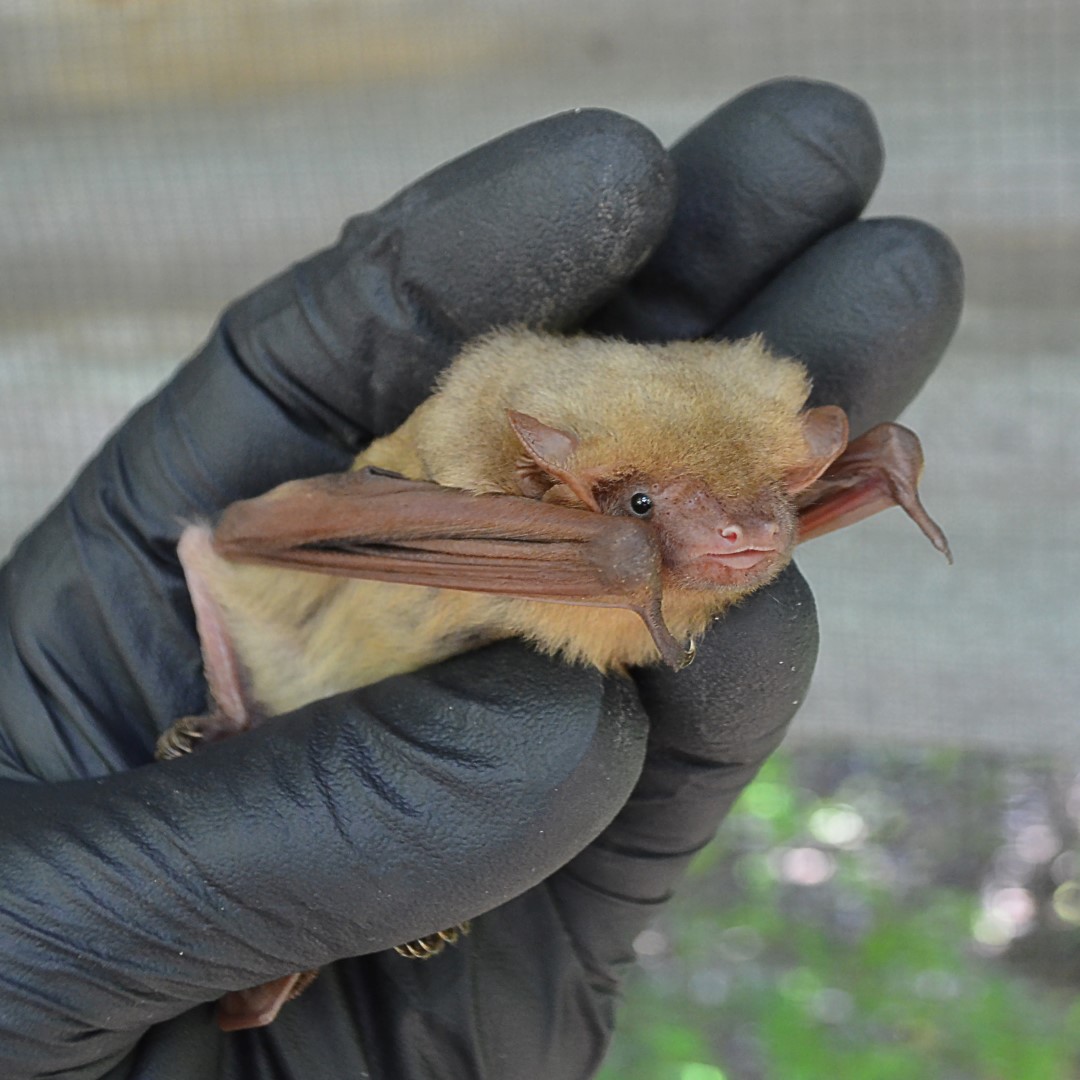

Don’t prune the brown skirts that form high up under the green crown. It is extremely critical bat habitat as it is the only place these bats roost. Most of Austin’s palm trees were killed by winter storm Uri, so each and every remaining palm is highly valuable habitat.
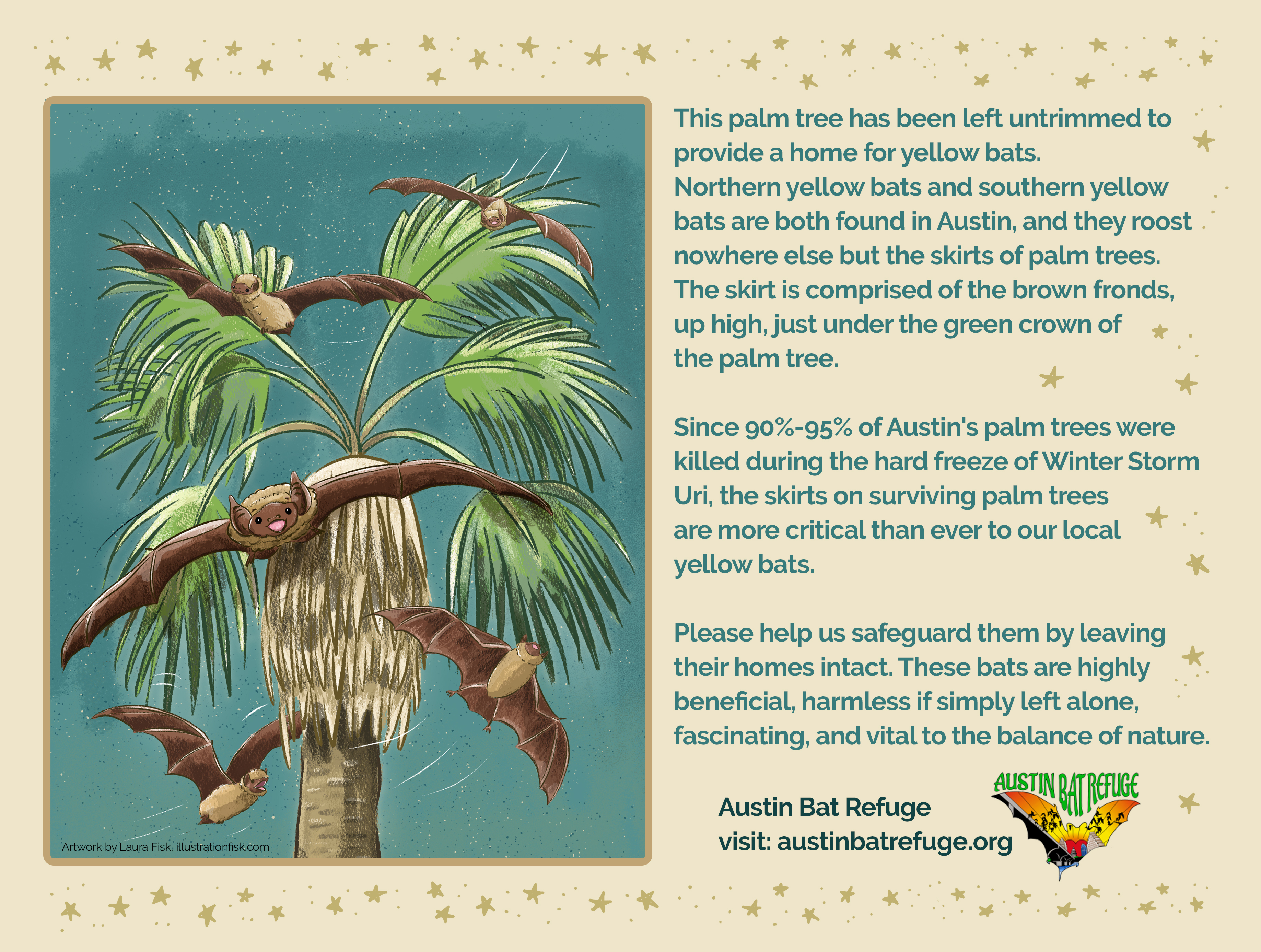
If a palm tree is removed, plant a native Sabal mexicana to take its place, preferably on the south side of a building, sheltered from cold winter winds. It takes many years, however, for a palm tree to grow tall enough to become a bat roost. In the meantime, install a retired utility pole nearby and we’ll attach palm fronds to the top to create a roost. This could be a critical means prevent a range roll-back or die-off of our local yellow bats. For a great primer on local Austin palm trees, see Identification of Palm Trees In the Austin, Texas Area: A Casual Guid for Distinguishing our Native Sabal mexicana from the Aliens by late, great, and witty, Landon Lockett.
Southern yellow bats (palm trees)

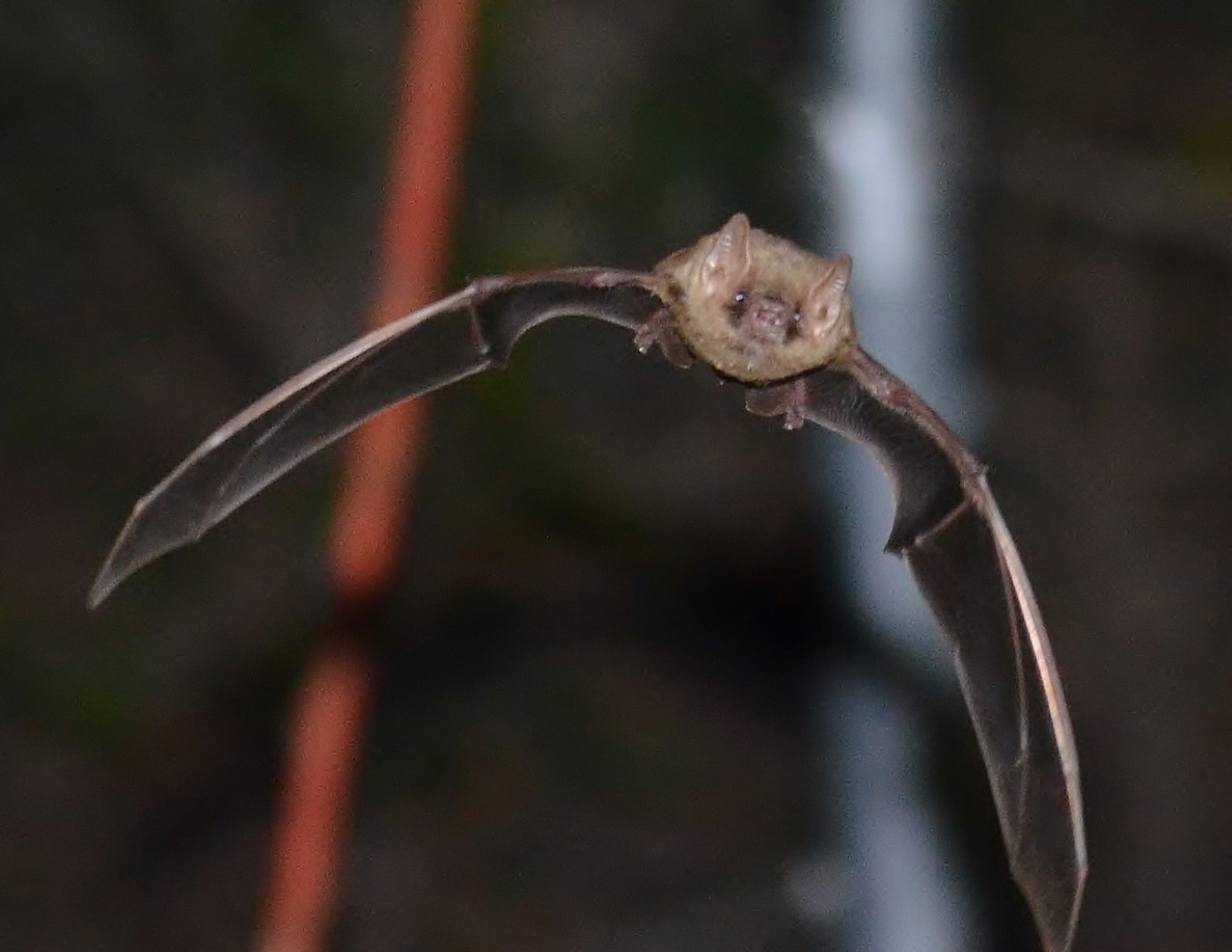
Same goes for southern yellow bats, which expanded their range northward into Austin about five years ago. Our first southern yellow intake came not from south Austin, as you might expect, but from palm trees on top of the bluff on Far West Boulevard near Mo-Pac and FM 2222. She was chopped out of a palm tree by a tree crew on Nov 13, 2018.
Hoary bats (broad leaf trees and pine trees)
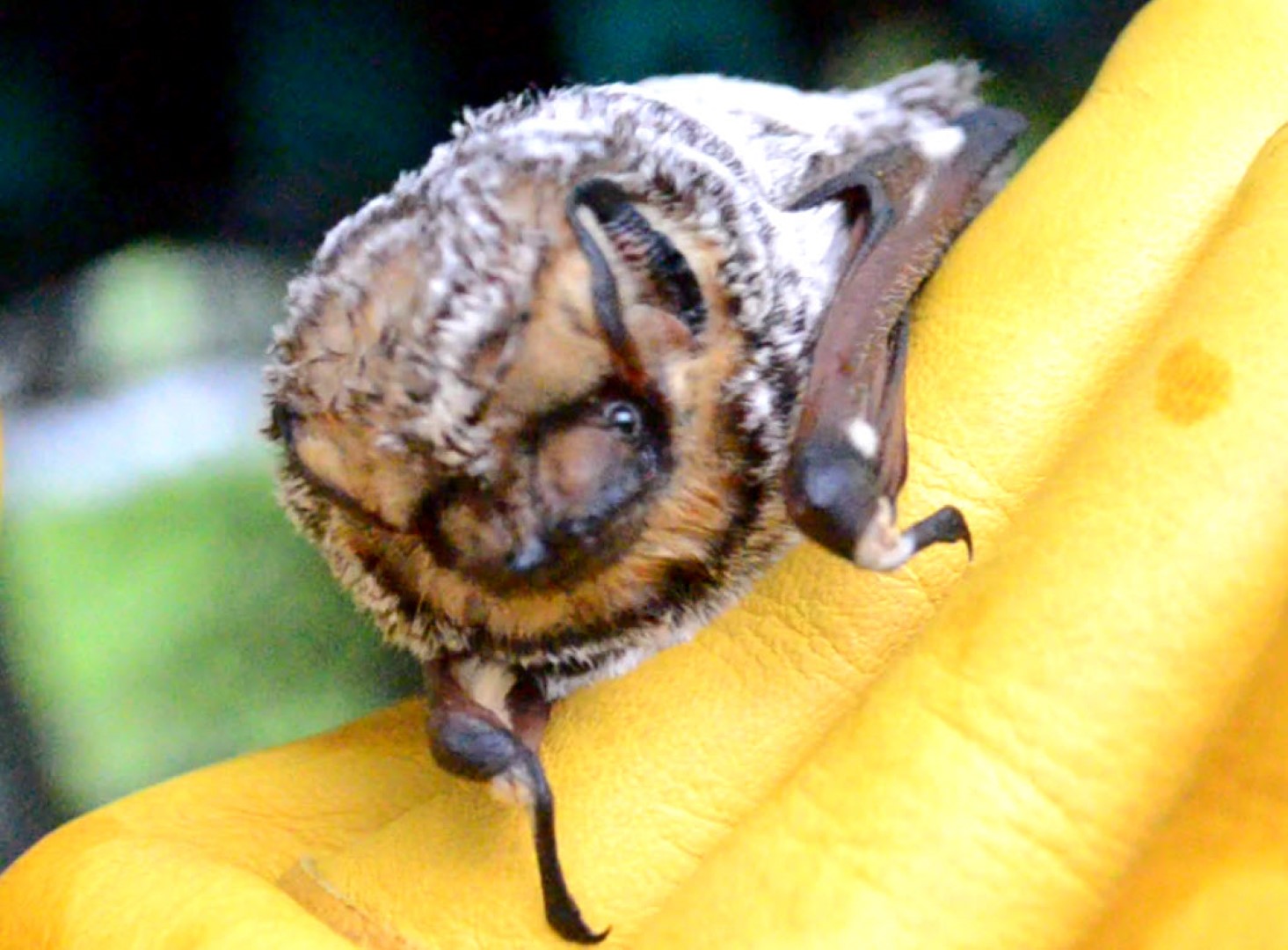
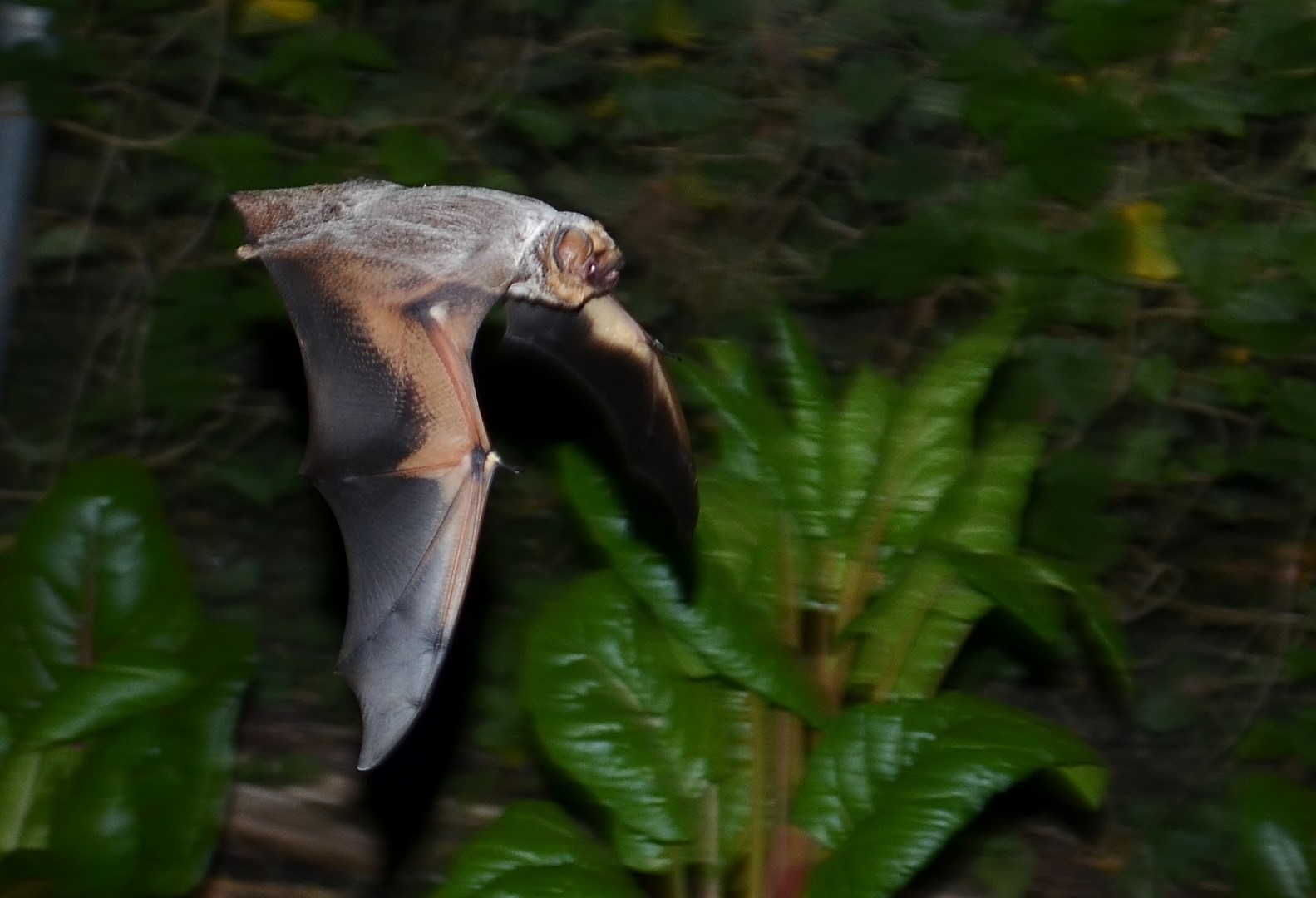
Hoary bats sometimes roost in dead branches hung up in trees. Recently one screeched and fell as a tree crew pulled a dead limb from a tree in north Austin. Always leave dead branches, if not in a high-traffic area.
2) WATER
If not within a quarter mile of water, then consider providing shallow ponds with an open swoop zone.
These can attract free pest control for community gardens. Kept shallow, they can be dipped out and poured on crops then sprayed out and refilled every few days.

During droughts, lots of bats drink out of local pools, as after-hours swimmers at Barton Springs can attest. Bats do get caught in municipal pools, especially in mid-summer as inexperienced juveniles learn to drink on the wing. An inexpensive (~$20) way to keep bats (and frogs, etc.) from drowning is to install a few Frog Log type products, which allow them to escape.
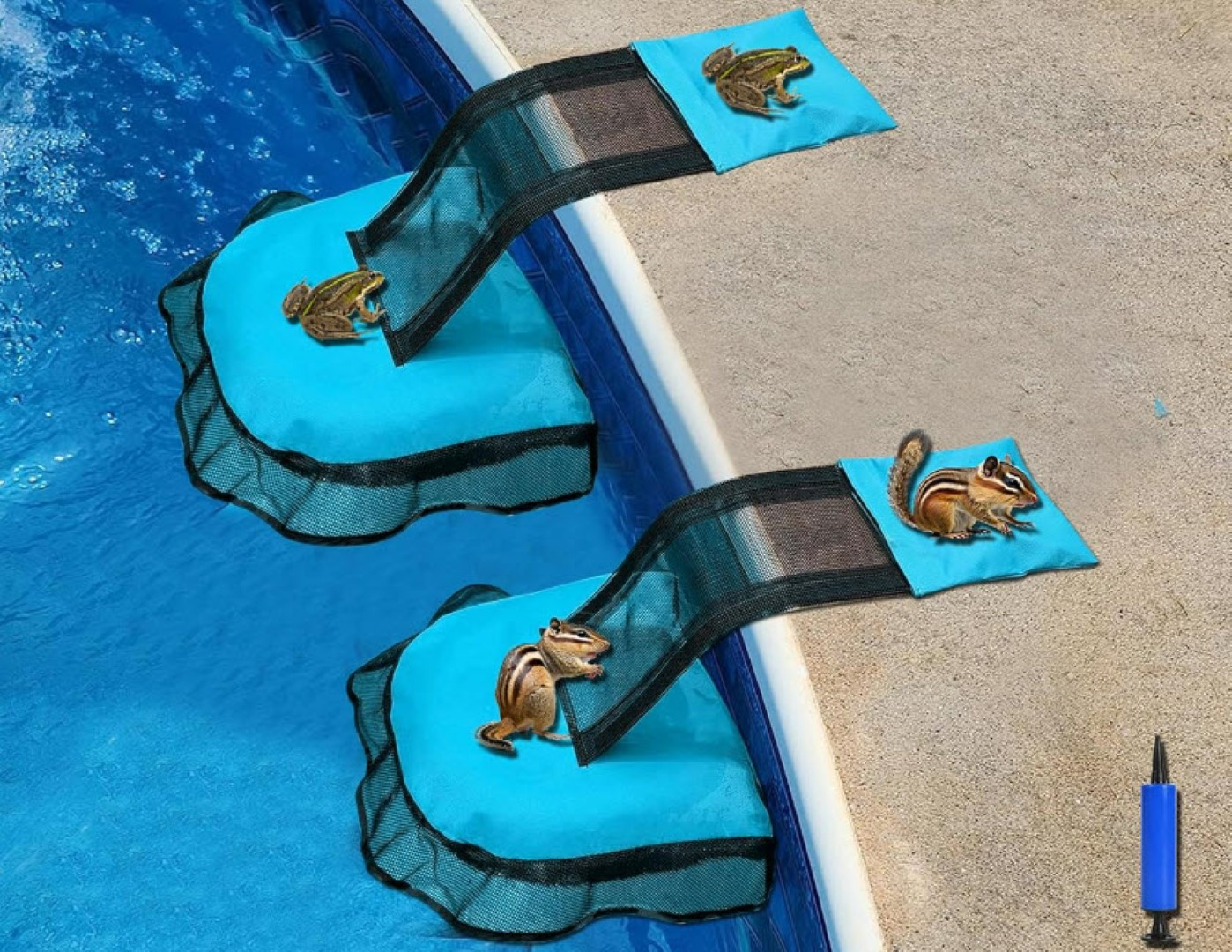
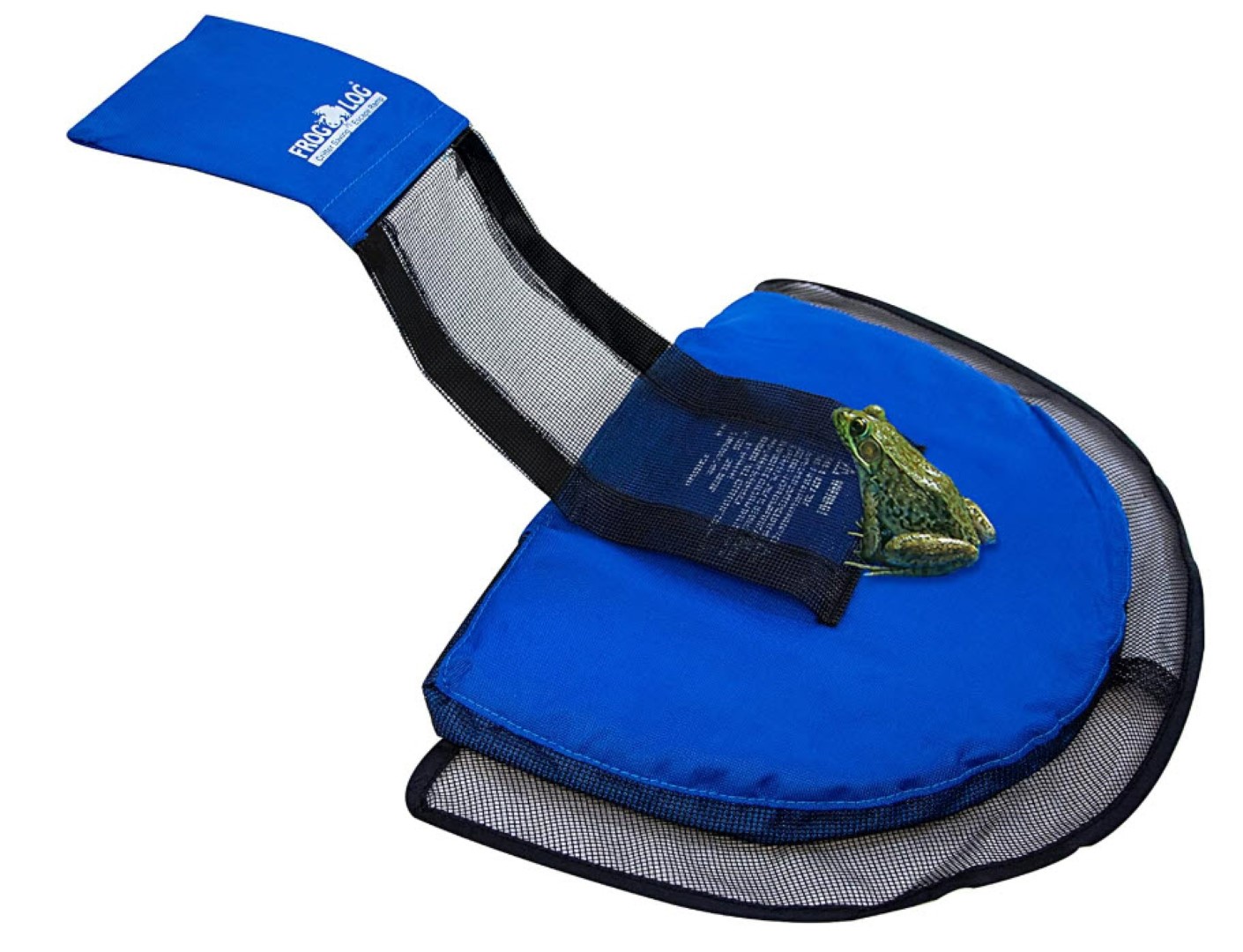
Maintain open swoop zones in the vegetation where local creeks pond up, so that bats can use them as seasonal water sources.
Consider elevated drinking troughs if an area has lots of low-growing plants. These can be placed on top of tomato cages in community gardens if needed.
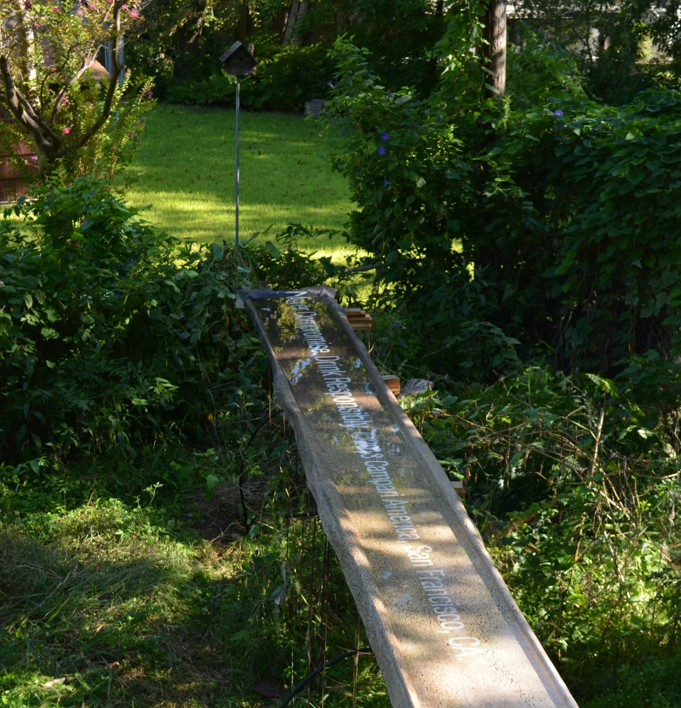

3) FOOD
Plant native trees, shrubs, and perennials and avoid pesticides.
Lots of information is available on our Gardening for Bats page.
Native, night-blooming shrubs and perennials attract moths that have evolved to feed on the nectar and lay their eggs on specific host plants.
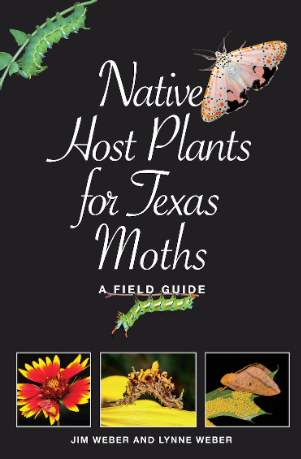

Tree-dwelling bats hunt around pecan trees and other native habitat in our parks and elsewhere in the urban forest, in pocket parks and backyards. Bats provide free pest control for hickory shuckworm moths, pecan caseborer moths and a whole host of other crop pests. Pesticides kill bat food.
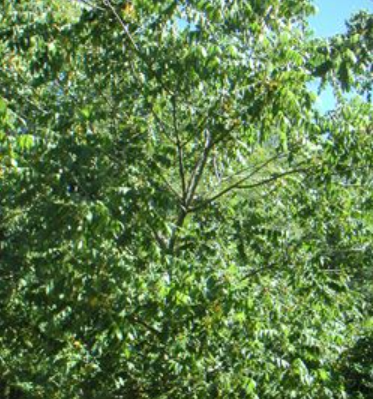

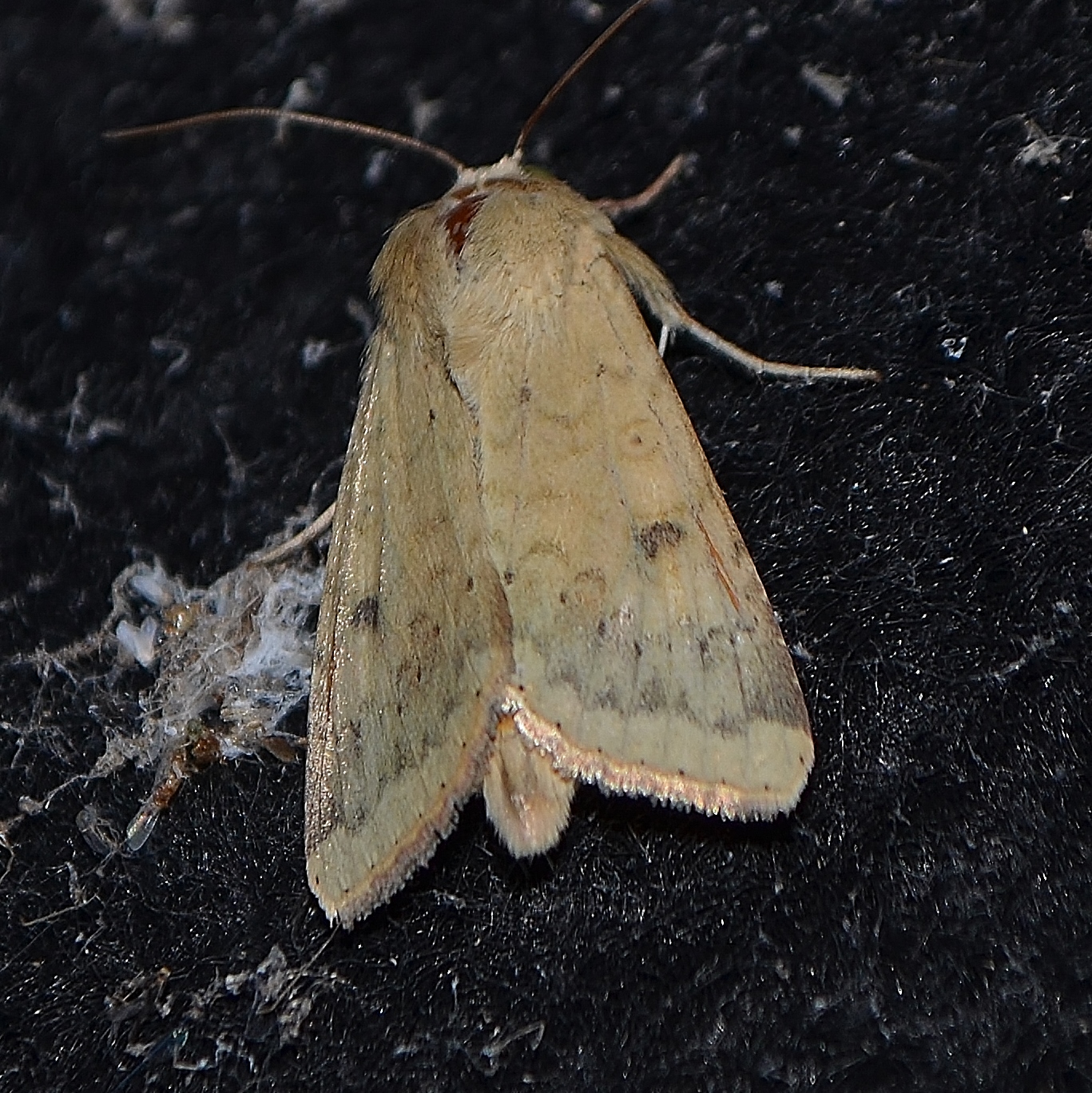
4) SAFETY
Peaceful coexistence is usually thought of as how humans can be safe around bats, but the converse is also true; bats need protection from direct harm by fearful humans. Developing respect for bats does both: Our mission statement is “To promote respect for bats and their place in the environment through education, conflict-resolution, rehabilitation and release.
Education
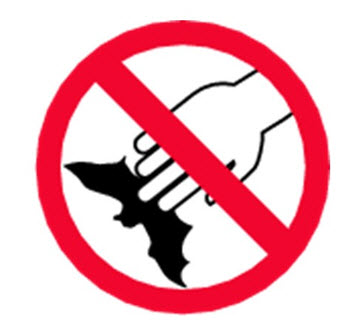
Bats are harmless if simply left alone.
If encountering a bat, do not touch it – show it respect and regard it with wonder – there is no need to fear a bat. Signs at Congress Avenue Bridge reading “Never handle a grounded bat” were all it took to keep thousands of bat watchers safe every night for over forty years.
Showing respect also means – Don’t feel the need to “bravely protect your family” by attacking the bat.
Keep pets on a short leash – don’t allow contact with wild animals of any kind.
Conflict Resolution
If bats have moved in somewhere undesirable, then consult with us; we’re happy to share our expertise.
Bats should not be allowed to move into the joints of structural masonry arched bridges such as those found in old Austin. These bridges must be repointed to avoid collapse. We consulted with the City of Austin on exclusion of bats from the old arched bridge at 6th St. over Shoal Creek.
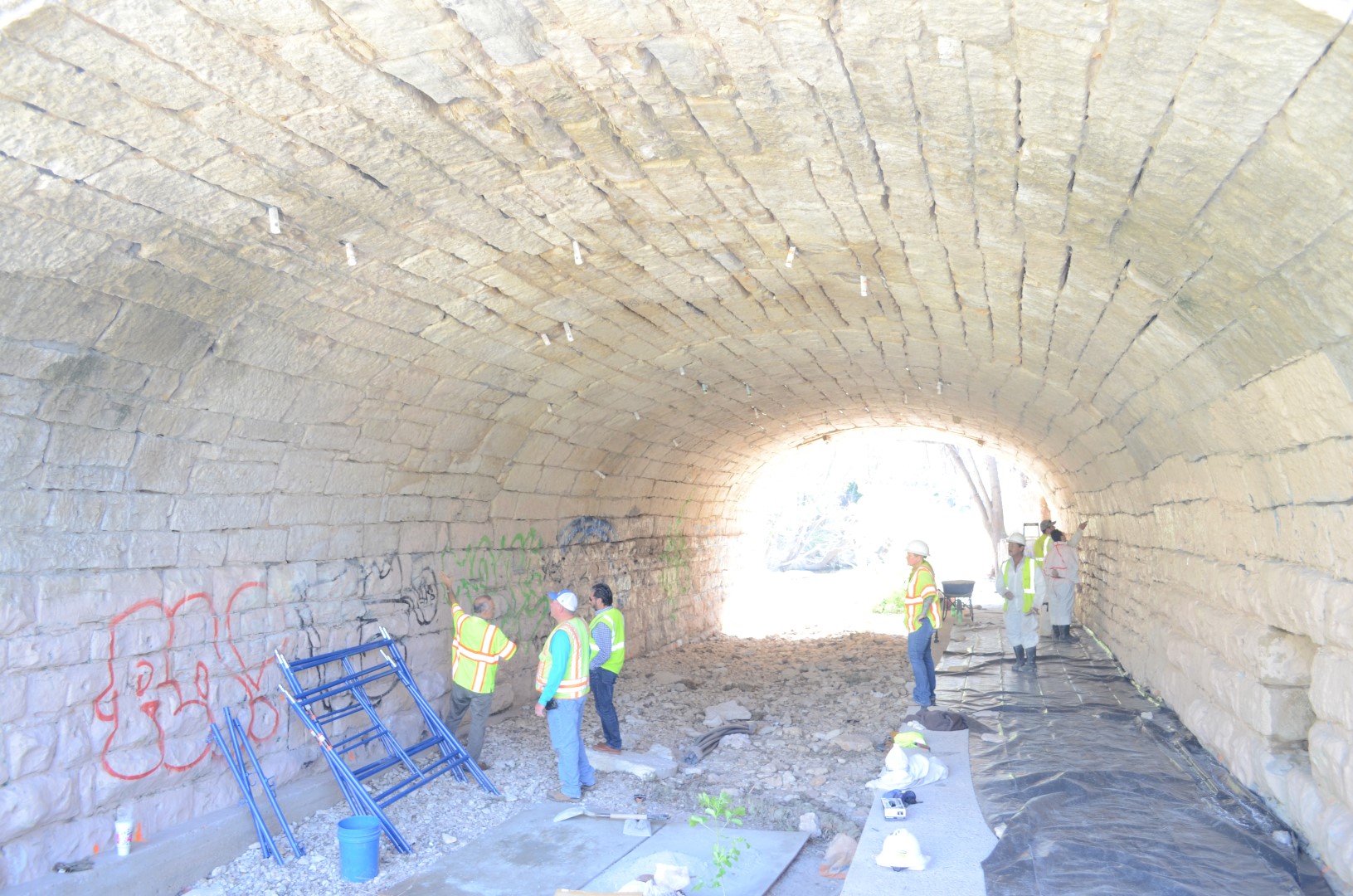
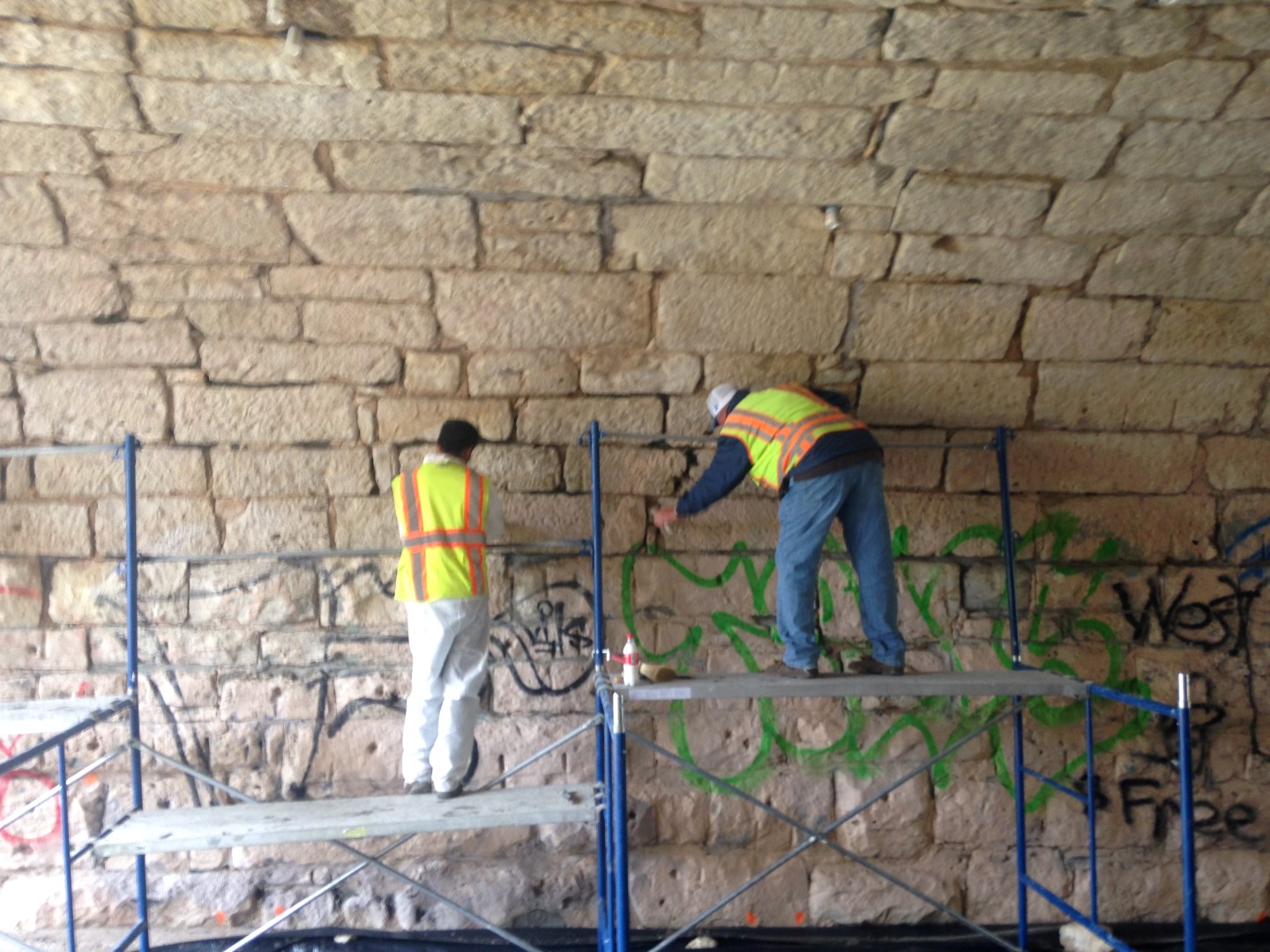

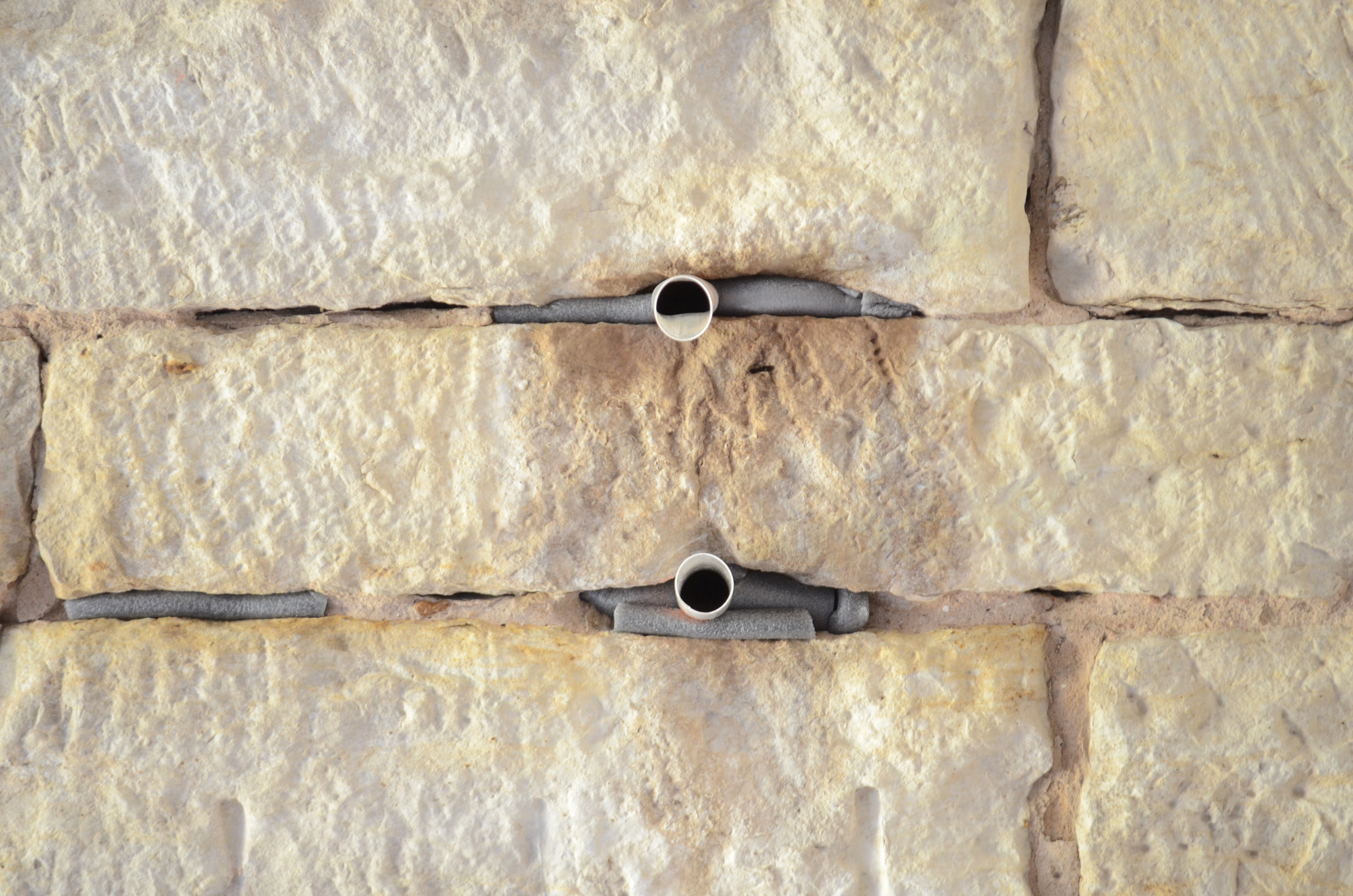
Rehabilitation and Release
If someone reports a grounded bat or one that is hanging low and exposed, get their contact info and make sure to find out what they know about the circumstances. Ask them if they witnessed the bat fall or become grounded, and if they know if anyone barehanded the bat.
If it’s obvious there has been no chance of contact with a human or pet, then we are happy to rehabilitate the bat.
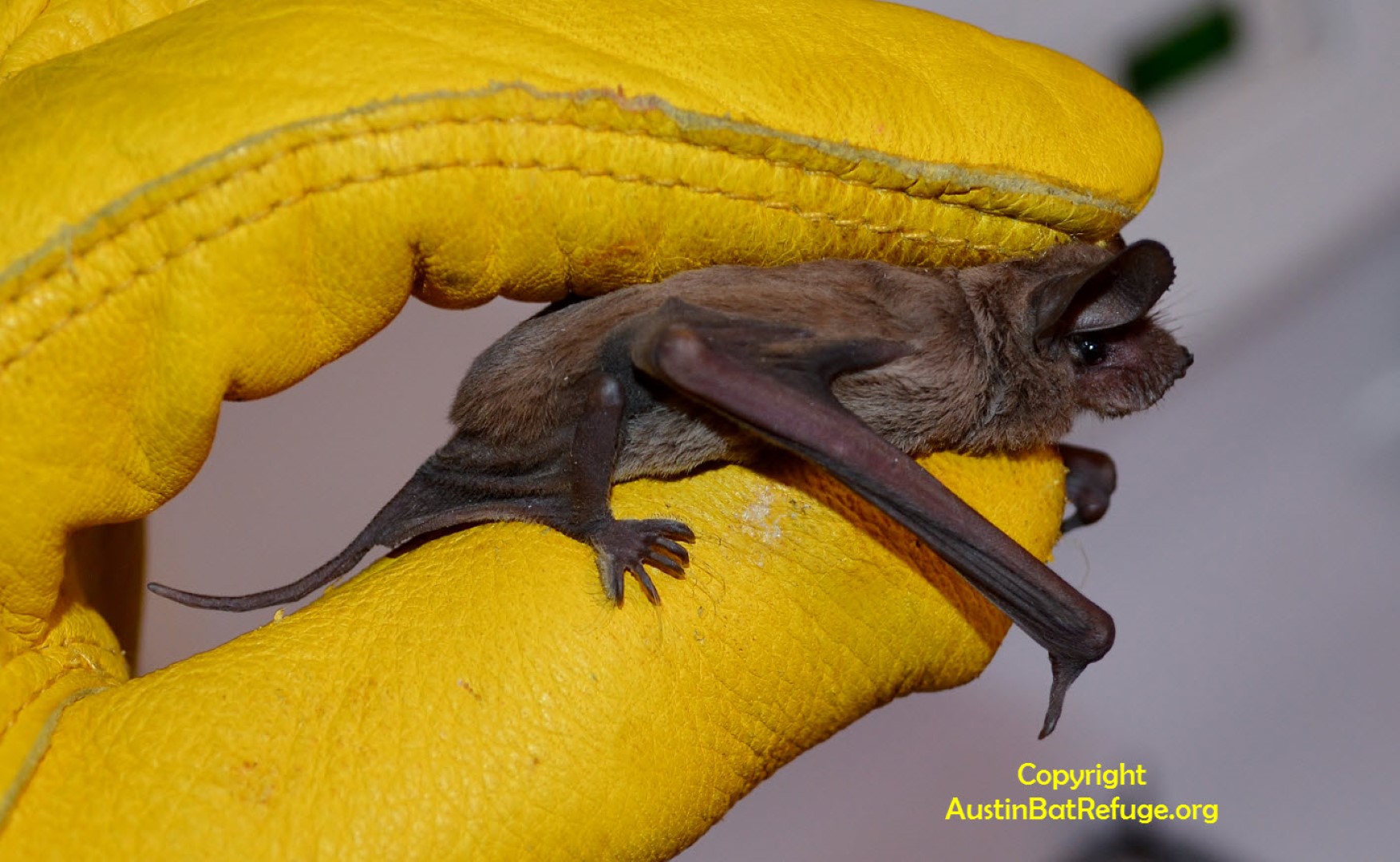
If someone has been bitten by the bat, then it must be tested for rabies, which requires euthanizing the animal. You can’t test a living animal for rabies.
If there has been no contact with humans or pets, testing them for rabies is a waste of a resource, health department budget, and a precious life.
Calling Austin Bat Refuge will divert such bats from needless euthanasia, while still safeguarding public health.
5) ENRICHMENT
NOT NECESSARY! In fact, bats enrich US by the gusto with which they live. Just being born a bat is all the excitement any living being could ask for. Watching them answer the call of the wild, as they are released after rehab, the “joie de vivre” is palpable as they leap into flight.
No one forgets the excitement of the Congress Avenue Bridge bats as they burst out of their roost in spectacular flight on a warm summer evening. That excitement inspires passion to protect these bats in all who witness this nightly event.
In Summary:
Bats are the only mammal capable of true flight. The name of their Order, Chiroptera, means “hand-wing”. Since their hands are their wings, when they fly, they are waving at us! Be friendly and wave back. And let’s use bat-friendly practices when maintaining Austin’s green infrastructure and the built environment.
